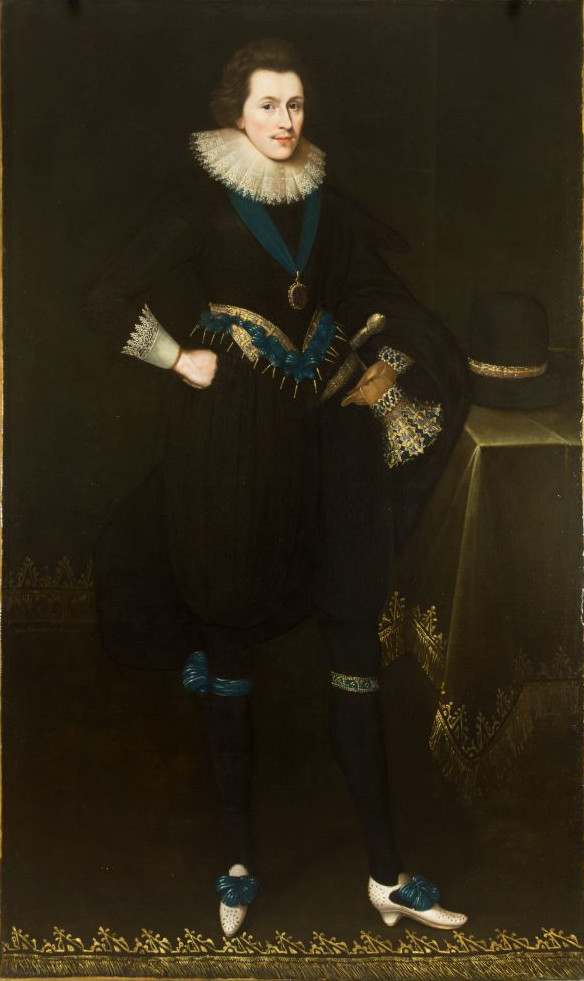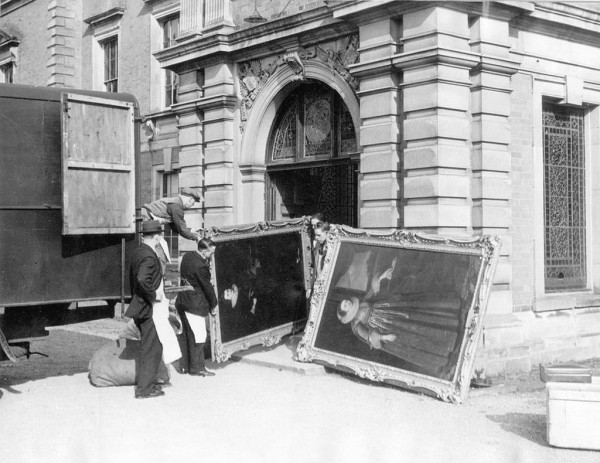The Portrait
We meet George Villiers here in around 1619 aged 26 or 27. He had been King James I’s favourite since 1615 and had already amassed significant land, fortune and titles. He was a powerful figure in national politics and had been made a Knight of the Order of the Garter in 1616, and a Privy Councillor in 1617.

This painting dates from about 1619 and has previously been attributed to the portrait artist Cornelius Johnson. After recent research, we now think it is more likely to have been painted by Paul van Somer, an artist from Antwerp in modern day Belgium. Van Somer moved to London in late 1616 and worked there until his death in 1622. He painted a full-length portrait of Queen Anne of Denmark in 1617 and one of her husband King James I the following year. He also painted many other courtiers during his time in London. In 1619, he attended Anne of Denmark’s funeral as her ‘picture-maker’. He was paid between £25 and £30 for a full-length portrait, the equivalent of about £5,000 to £6,000 today.


Is this really the face of Villiers?
This portrait has been known as George Villiers, 1st Duke of Buckingham, but is there room for doubt?
The painting was bought by the museum service from the Warwickshire estate of Newnham Paddox in 1938, which was the home of Susan Feilding and her husband the Earl of Denbigh. Susan was close to Villiers and her husband owed his advancement and titles to his powerful brother-in-law, so it would not be surprising that they owned a portrait of him.
After comparing this painting with other portraits that have been securely identified as of George Villiers, however, some art historians have suggested that it might not, in fact, be of him.
We do know that Villiers was a young man in 1619, and a Knight of the Order of the Garter. Tall, blue-eyed and handsome with famously long and slender legs as shown in other known portraits, our sitter certainly matches this description.
Image courtesy of Critchlow & Kukkonen Ltd

‘The handsomest-bodied man of England; his limbs so well compacted and his conversation so pleasing and of so sweet a disposition’
Bishop Goodman
This large-scale portrait seeks to capture the magnetism of our sitter, portraying Villiers as handsome, tall, and glamorous.
King James gave him the nickname ‘Steenie’, an affectionate version of Stephen after the Saint who had the ‘face of an angel’.
Villiers was one of the most painted men in the early Stuart period. He commissioned portraits by the leading painters of the day to show off his status, titles and wealth. He was also an avid collector of art.

